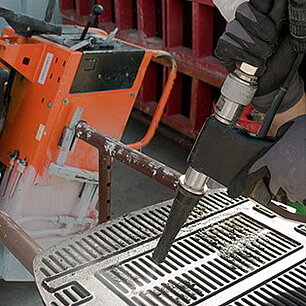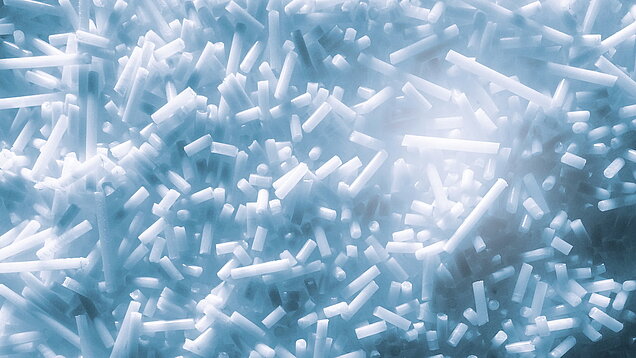What is Dry Ice Blasting?
Dry ice blasting (also known as CO2 blasting and dry ice cleaning) is a unique industrial cleaning method that uses specialized equipment to mix dry ice (solid carbon dioxide) pellets with compressed air. The compressed air accelerates the dry ice pellets through a blast hose. The pellets exit a blast nozzle near supersonic speeds and impact the surface. Upon impact, the dry ice converts to a gas (sublimation) and the rapid gas expansion of CO2 facilitates the removal of the surface contamination.
Cleaning Mechanism
The cleaning mechanism for dry ice blasting depends on the following factors:
- Kinetic Energy (speed and mass of pellet)
- Thermal Shock (temperature difference between pellet and residue)
- Thermal-Kinetic Effect (gas expansion of sublimed dry ice).
Kinetic Energy
Dry ice is softer and less dense than common blast media. During the dry ice cleaning process, the blast equipment accelerates the pellets close to supersonic speeds. Upon impact, the pellets sublime almost instantaneously and transfer a small amount of energy to the residue or surface. This phenomenon reduces abrasion to the substrate.
Thermal Shock
As the pellets impact the surface and sublime, heat is absorbed from the surface residue. The rapid heat transfer from the top layer of the residue creates temperature gradients within the micro layers of the residue. As a result, micro cracks and fractures form within the residue due to high shear stress. This effect reduces the adhesion of the residue to the surface.
Thermal-Kinetic Effect
Upon sublimation, the carbon dioxide gas expands to a volume nearly 800 times the volume of the original pellet. The rapid gas expansion helps lift and remove the residue from the substrate.

LASER CLEANING Versus DRY ICE BLASTING
Cold Jetting vs Fiber Laser Cleaning
In dry ice blasting, (deep) frozen CO2 (ice pellets) is used as the blasting medium. In addition to the kinetic energy, a thermally induced shock wave/voltage is generated when the CO2 hits the surface, causing the coating to flake off.
Due to the “gaseous” blasting material, there is no need to worry about the disposal of the blasting material, but here, too, the advantages of simple application are countered by a number of disadvantages:
- Dry ice as blasting material must be stored cooled and insulated and is only “conditionally” durable
- Costs of the blasting material
- Considerable compressed air and energy consumption during the generation and application of the blasting medium CO2
- Costs of up to 100 €/hour are possible in some cases
- Very effective pellet blasting can produce noise emissions of up to 120 dB/A
- Limited possibilities of process protection
